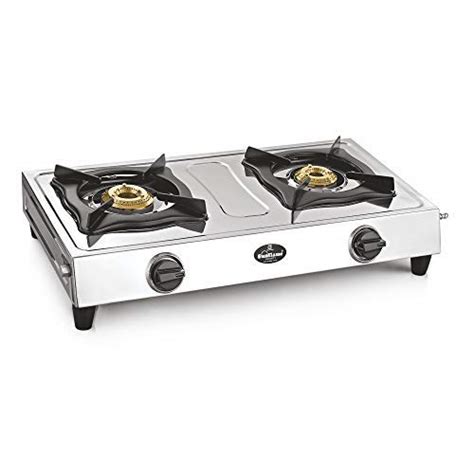In the heart of every kitchen, a gas stove and oven reign supreme, unlocking culinary wonders and elevating home cooking to new heights. With a vast array of options available, selecting the perfect gas range can be a daunting task. To guide your decision, we present a comprehensive buyer’s guide, empowering you with all the knowledge you need to find the best gas stove and oven for your home.

Why Choose a Gas Stove and Oven?
Gas stoves and ovens offer several advantages over electric models:
- Precise Temperature Control: Gas burners provide instant and adjustable heat, allowing for fine-tuning of cooking temperatures.
- Faster Cooking Times: The intense heat generated by gas flames reduces cooking times, saving you precious kitchen hours.
- Enhanced Flavor: Gas stoves produce a unique flavor that enhances the taste of food, due to the caramelization of sugars and the Maillard reaction.
Types of Gas Stoves and Ovens
Freestanding Gas Ranges: These ranges stand alone and are not built into cabinetry. They offer flexibility in placement and come in various sizes to suit different kitchen layouts.
Slide-in Gas Ranges: Slide-in ranges fit seamlessly into existing countertops, creating a streamlined and modern look. They provide a more built-in aesthetic and offer a wider selection of features.
Built-in Gas Cooktops and Ovens: These units are installed separately into countertops and walls. They provide the highest level of customization and allow for optimal placement based on kitchen design preferences.
Key Features to Consider
When selecting a gas stove and oven, consider the following key features:
Burners:
- Number: Determine the number of burners you need based on your cooking habits.
- BTU Output: The British Thermal Units (BTUs) indicate the heat output of a burner. Higher BTUs produce more intense heat.
- Burner Types: Open burners provide quick heat distribution, while sealed burners are easier to clean.
Oven:
- Capacity: Measure the interior dimensions of the oven to ensure it can accommodate your cooking needs.
- Baking Modes: Choose an oven with the desired baking modes, such as convection baking, broiling, and roasting.
- Self-Cleaning: Self-cleaning ovens eliminate the hassle of scrubbing by pyrolizing food particles at high temperatures.
Other Features:
- Cooktop Material: Gas stovetops come in various materials, including porcelain enamel, stainless steel, and cast iron.
- Grates: Consider the type of grates you prefer, such as cast iron or wrought iron.
- Ignition System: Electronic ignition offers convenient and quick lighting.
- Safety Features: Look for features such as flame failure devices and gas leak detectors for added safety.
Brands and Models to Consider
Freestanding Gas Ranges:
– GE Profile PGB930YPFS
– LG LSGL6335F
– Samsung NX58R9511SS
Slide-in Gas Ranges:
– KitchenAid KSDG950ESS
– Wolf GSS3048VD
– Viking VSO6304GSS
Built-in Gas Cooktops and Ovens:
– Bosch HGI8056UC
– Dacor DIH230USS
– Thermador P30IT800
Installation and Maintenance
Proper installation is crucial for the safe and efficient operation of your gas stove and oven. Hire a licensed plumber or gas technician to ensure a correct installation.
Regular maintenance is essential to extend the life of your appliance. Clean the cooktop and oven regularly, and schedule professional inspections to check for any leaks or malfunctions.
Conclusion
Selecting the best gas stove and oven for your home requires careful consideration of your cooking style, kitchen design, and desired features. By following the guidelines provided in this buyer’s guide, you can make an informed decision that will transform your kitchen into a culinary haven.
| Burner Type | Typical BTU Output |
|---|---|
| Low-Simmer Burner | 5,000-7,000 |
| Medium Burner | 9,000-12,000 |
| High-Output Burner | 15,000-18,000 |
| Power Burner | 20,000+ |
| Kitchen Size | Oven Capacity (Cubic Feet) |
|---|---|
| Small (Under 150 Square Feet) | 2.5-3.2 |
| Medium (150-250 Square Feet) | 3.5-4.5 |
| Large (Over 250 Square Feet) | 5.0+ |
| Material | Benefits |
|---|---|
| Porcelain Enamel | Durable, easy to clean, available in various colors |
| Stainless Steel | Heat-resistant, fingerprint-resistant, modern look |
| Cast Iron | Excellent heat retention, durable |
| Bake Mode | Description | Uses |
|---|---|---|
| Convection Baking | Circulates hot air around the food | Even cooking, faster baking times |
| Broiling | Intense heat from the top | Browning, grilling |
| Roasting | Dry heat with a fan | Searing, roasting large cuts of meat |
1. What is the best type of gas stove for me?
The best type of gas stove depends on your cooking style and kitchen layout. Consider the number of burners, BTU outputs, and features you desire.
2. How do I clean my gas stove and oven?
Regularly wipe down the cooktop with a damp cloth. For the oven, consider using the self-cleaning feature or a commercial oven cleaner.
3. What are the safety features I should look for in a gas stove and oven?
Look for flame failure devices, gas leak detectors, and automatic ignition.
4. How can I enhance the flavor of my food using a gas stove?
Use high-output burners for searing and grilling, which enhances caramelization and the Maillard reaction.
5. Can I convert my electric stove to a gas stove?
Converting an electric stove to a gas stove requires specialized knowledge and equipment. It is recommended to consult with a licensed gas technician to determine if conversion is possible and safe.
6. How long do gas stoves and ovens typically last?
With proper maintenance, gas stoves and ovens can last for 10-15 years or longer.
7. What are some creative uses for a gas stove?
Beyond cooking meals, you can use a gas stove top for:
– Melting cheese over fondue
– Roasting marshmallows
– Searing and grilling vegetables
– Preparing tabletop hibachi
